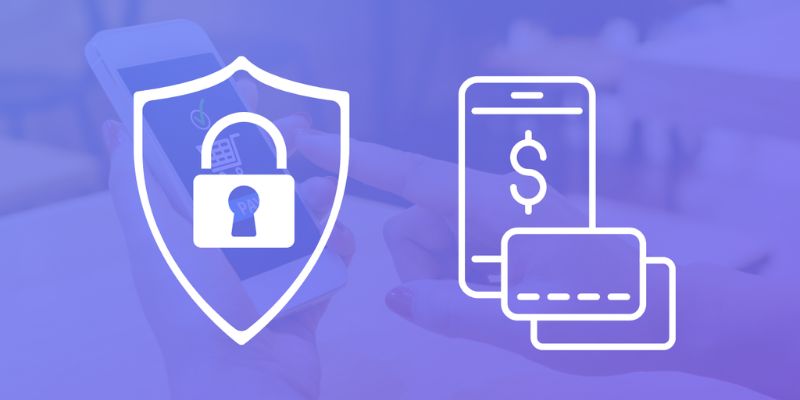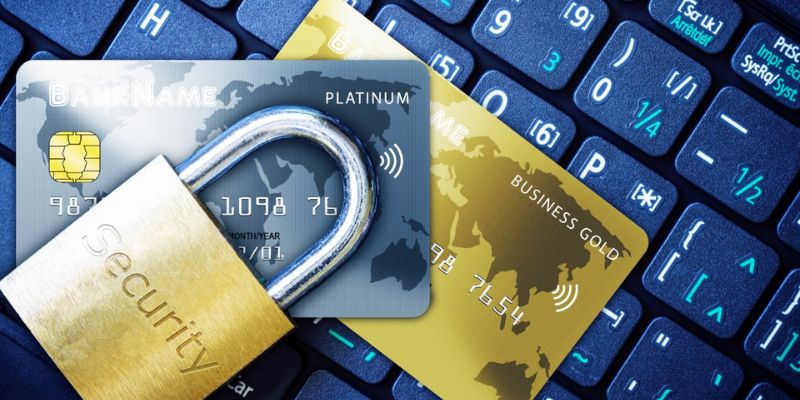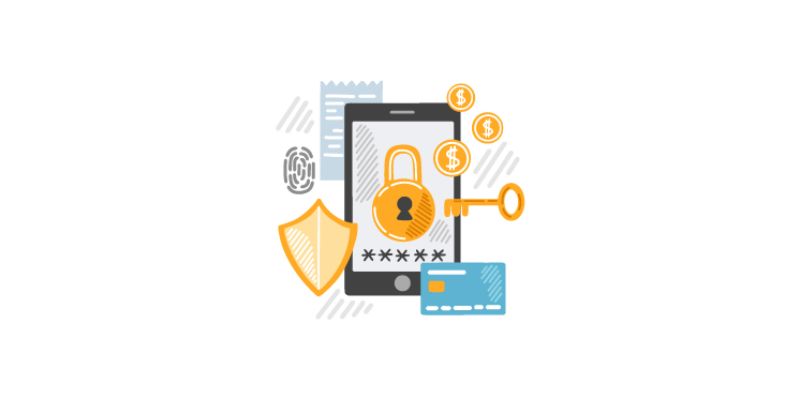Regulations for secure digital payments are a must in today’s online shopping boom. As you tap and swipe through your purchases, there’s a lot going on behind the scenes to keep your money safe. We’ve got rules and tech working overtime to protect each transaction. Like a hidden shield, these laws fight off the bad guys. Think of this as your map through the maze of digital payment security, so you can shop with peace of mind!
Understanding PCI DSS for Digital Payment Security
The Importance of PCI DSS Requirements 5-10
When we buy or sell online, we trust our info stays safe. But how? That’s where rules like PCI DSS come in. Think of it as a guard for our card info. Rules 5 to 10? They’re key. They make sure we have good defense like virus checkers and secret codes.
Rule 5 says we need virus checkers. This stops bad software from stealing card details. Everyone follows this, from big shops to small cafes. Rule 6 talks about safe coding. This makes sure no sneaky holes are in websites for thieves to creep through.
Rule 7 is about who can see our info. Not everyone should, right? Just like you don’t give your house key to anyone, online places only let a few folks near card details. Rule 8 is about making sure anyone who can see our info can be trusted and is who they say they are.
For rules 9 and 10, it’s all about keeping a close eye on info. Think of it like a security cam for card data. It checks who comes in and out. If something looks fishy, it tells the guards.
Now, you may think, why all these steps? Simple. It’s to keep your shopping and selling online safe and sound.
Implementing Strong Access Control Measures
Access control is like giving a secret handshake. It makes sure only the right people can get to card info. Let’s break it down.
First, we set up who can peek at card data. It’s a bit like making a VIP list for a party. If your name’s not on the list, you can’t get in. This is how we protect customers.
Now, what if we have lots of folks who need to see the info? We use a system called “least privilege.” It means you only get enough access to do your job. No more, no less. It’s like having a key that only opens certain doors.
Then there’s a thing called MFA – multi-factor authentication. This is when you need more than one way to prove it’s really you. Like when a cash machine asks for your card and a PIN. It’s tough for bad guys to fake this.
Lastly, we check and track everything. Who looked at what, when, and why. If something odd pops up, we’re on it fast. It’s like having a record of everyone who entered a room.
Access control is a big part of keeping digital money moves safe. It’s like a bunch of gates and guards. They all work together to watch over our cards and cash.
So, let’s keep our details under lock and key. Let’s stick to the rules and keep the online world a safe spot to spend and earn. This is our line in the sand, our stand against those who lurk in the shadows. Our safety, our right. And that’s a wrap for now on keeping secure in the land of clicks and swipes.

Meeting Global Security Standards in Payments
The Role of EMV Standards and Compliance
When we buy stuff with a card, we trust it’s safe, right? That’s thanks to EMV. What is EMV, you ask? It’s a global standard making cards and terminals work well together. Plus, it fights fraud with chips instead of magnetic stripes, which are way easier to copy. Order online and notice the card fields? That’s because of EMV’s rules.
Shops need to follow EMV to take your card. If they don’t, and something goes wrong, they pay the price, not the bank. EMV means safer checkouts and less card crime. And with so many people using cards, EMV is key to keeping money safe.
Adhering to GDPR and PSD2 for International Transactions
Now, buying things isn’t just local. You could be in the US buying from Europe. That’s where GDPR and PSD2 come in. GDPR keeps your personal data safe in the EU. It’s tough rules mean companies must tell you what they do with your info. They can’t just pass it around.
PSD2 goes further—it’s also about keeping online payments safe in Europe. It made a big change with Strong Customer Authentication, or SCA. This means extra checks when you pay, like a password or a message on your phone. It can be annoying, but it’s for safety.
Both GDPR and PSD2 make shopping from afar safer. They force companies to protect your money and your privacy. So when you type in your card info, these rules are like invisible guards, keeping your details safe. And that’s the peace of mind we all want, right?

Enhancing Transaction Security with Advanced Technologies
Applying Tokenization and Encryption Protocols
When you pay with a card, your data is at risk. Hackers want it. But we can stop them. We use smart tech like tokenization. It turns data into code. Only the right system can read this code. This keeps your card details safe.
What is tokenization? It’s when your real card number gets hidden by a random code. Think of it as a secret agent. It travels the internet safely. It protects your card number from bad guys. Even if they grab the code, they can’t use it. Your real number is safe.
Encryption is another hero in our story. It scrambles your data. It’s like a puzzle that’s really hard to solve. Only the one with the key can see your info in a way that makes sense. When we talk about encryption protocols for payment, it means the rules we follow to lock up your data tight.
For you, this means when you’re buying online, or with your phone or watch, you’re safe. You click, and like magic, your info is guarded.
Utilizing MFA and Strong Customer Authentication Solutions
Now, imagine you have a super lock on your door. That’s MFA, or multi-factor authentication. It’s not just a key you need. You might need a code from your phone too. It’s like double security. So even if someone has your password, they can’t get in.
Strong Customer Authentication, or SCA, is part of new rules to keep you safe. When you’re in Europe, they ask for two proofs when you use your card. It can be something you have, like your phone. Or something you are, like your fingerprint.
But why do we care so much? Well, the world of buying and selling is all about trust. If you trust that your money is safe, you’ll shop and pay without worry. That’s why we follow these rules.
We’ve got your back. With tokenization and strong locks, it’s like giving your card a shield and a sword. Every swipe, tap, or click, you’re safe. And bad guys? They don’t stand a chance. We’re winning the battle for secure digital payments.

Regulatory Frameworks and Compliance Certification
Navigating the Fintech Regulatory Landscape
When it comes to money online, rules keep us safe. Think of digital transaction regulations as guardrails on a bridge. They ensure we get where we’re going without tumbling over the edge. In the world of digital payments, these rules are super important. They prevent fraud and protect our money.
Folks like me follow a map made by experts – the PCI DSS requirements. These are like secret codes that keep thieves away from our cash. For example, requirements 5 through 10 help fight off sneaky computer viruses and keep your card details under lock and key.
Now, ever heard of PSD2 compliance? It’s a set of rules for payments in Europe. It makes sure banks play fair and keep your details extra safe. With GDPR, we have another layer that guards your personal info. It’s all about giving you control and peace of mind when shopping online.
In the USA, things are similar but a bit different. We have our own rules, like those from the Federal Reserve. These make sure banks and businesses handle your money right. They spot bad guys trying to mess with the system.
Staying on top of all this can feel like a tough video game. Rules change, and new baddies pop up. But don’t worry; it’s my job to beat the game. I make sure everyone follows the rules and your money stays safe.
The Process of e-Payment Compliance Certification and Audits
Let’s talk about keeping online payment safe, like a superhero guards their city. Payment security compliance is the armor that protects your cash. It’s a big deal, and getting it right is a must.
First up, experts like me check for any cracks in the system. We make sure no villain can sneak in. This is a bit like a school test but for your payment process. We call it an audit. It makes sure all the tough PCI DSS rules are being met.
Audits aren’t one-time events; they’re more like a yearly doctor’s check-up for payment safety. They catch small issues before they turn into big problems. This is crucial for trust. If people trust where they put their money, everyone wins.
After a check-up, if things look good, you get a gold star, or in our world, an e-payment compliance certification. This badge of honor tells everyone you’re doing things the right way. Think of it as a superhero’s cape that shows they’re the good guy.
In short, my job is to guide everyone through this maze of rules. Staying certified keeps the digital world spinning safely. It’s a bit of a behind-the-scenes act, but one that makes sure you can buy that toy or book a trip without worry. So next time you shop or send money online, remember, there’s a whole team ensuring your transaction is locked down tight.
We’ve covered a lot about keeping digital payments safe. We talked about PCI DSS, which sets the rules for protecting card info. Tight access control is key to making sure only the right eyes see our data.
We also dove into global standards like EMV, which makes sure everyone worldwide plays by the same safety rules. GDPR and PSD2 are big deals in Europe, keeping personal info safe across borders.
Tech like tokenization and encryption makes stealing card details much tougher. And adding multi-factor authentication? That’s like having a super strong lock on your front door.
And finally, we can’t forget the rules and checks that guide fintech. Knowing them helps us stay on track and pass big security checks with flying colors.
So there you have it. Strong security for digital payments isn’t just smart; it’s a must. And now you know the big players and tools in the game. Stay sharp and keep those payments safe!
Q&A :
What are the standards for secure digital payments?
Secure digital payments are governed by several standards designed to protect consumers and merchants alike. These include the Payment Card Industry Data Security Standard (PCI DSS), which sets the requirements for all organizations that handle credit card information. Additionally, protocols such as Secure Sockets Layer (SSL) and Transport Layer Security (TLS) encrypt data during transmission. It’s critical for businesses to stay compliant with these and any region-specific regulations to ensure secure processing, storage, and transmission of payment data.
How do regulations affect online payment security?
Regulations for online payment security, like the aforementioned PCI DSS, mandate the adoption of stringent data protection measures to safeguard financial information during and after transactions. Compliance with such regulations not only protects customers but also helps businesses avoid hefty fines and damage to reputation caused by data breaches. Regular updates to security protocols and continuous monitoring of transactions are crucial to staying ahead of potential threats and regulatory requirements.
What are the consequences of non-compliance with digital payment regulations?
Non-compliance with digital payment regulations can result in severe penalties including substantial fines, legal action, and reputational damage. For instance, violation of the PCI DSS could lead to fines ranging from $5,000 to $100,000 per month until compliance is achieved. Moreover, businesses may face increased transaction fees or even termination of their ability to process digital payments. It’s imperative for businesses to understand and comply with the regulations to avoid these consequences.
Can consumers enhance the security of their digital payments?
Yes, consumers can enhance the security of their digital payments by taking proactive measures. These include using payment methods that offer strong fraud protection, enabling two-factor authentication, regularly monitoring account statements, and being cautious of phishing scams. Additionally, ensuring that online retailers and websites are PCI DSS compliant before conducting transactions can also help in mitigating risk.
What emerging technologies are shaping secure digital payments?
Emerging technologies like blockchain, tokenization, and biometric authentication are playing increasingly important roles in secure digital payments. Blockchain offers a decentralized ledger system for secure and transparent transaction tracking, while tokenization replaces sensitive data with unique identifiers to minimize exposure during transactions. Biometric authentication utilizes fingerprints, facial recognition, or other personal identifiers, providing a robust layer of security for user verification. Staying abreast with such innovations can help businesses and consumers ensure more secure transactions.

